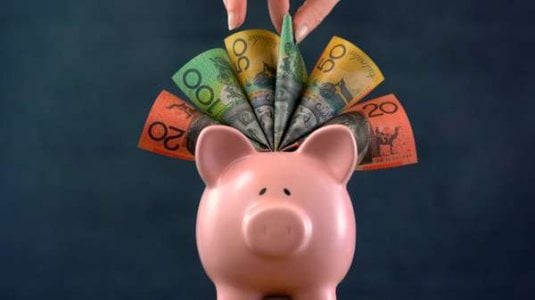Escape financial ruin: Learn about this surprisingly common ‘debt trap’ no one is talking about
- Replies 7
In the current economic climate, where the cost of living seems to be perpetually on the rise, many Australians—particularly those in their golden years—are finding themselves caught in a precarious financial snare known as the ‘debt trap’.
This trap is not only common but also notoriously difficult to escape, and it's a topic that deserves our attention here at the Seniors Discount Club.
The ‘debt trap’ typically begins innocuously enough, with credit cards and personal loans offering a seemingly convenient way to bridge the gap during tough times.
However, this can quickly spiral into a situation where you're pouring your hard-earned money into a bottomless pit of interest payments, making it feel like you're constantly taking one step forward and two steps back.

The statistics paint a sobering picture: the average Australian is saddled with around $9,946 in credit card and personal loan debt.
With an average interest rate of 15 per cent, this translates to a staggering $1,491 annually in interest alone—money that could have been put to better use in your retirement savings or enjoying your post-work life.
But it's not all doom and gloom. There are strategies you can employ to break free from the clutches of debt and regain control of your financial future.
Debt consolidation: A lifeline
One effective method to tackle multiple debts is through consolidation.
This involves combining all your outstanding debts into a single loan, ideally with a lower interest rate, which can simplify your payments and potentially reduce the total amount you pay over time.
It's akin to extinguishing a raging fire with a fire hose instead of a watering can—the impact is immediate and more effective.
Balance transfer credit cards: A temporary reprieve
Another option is to use balance transfer credit cards. These cards allow you to transfer existing credit card balances to a new card with a low or even zero interest rate for a promotional period.
This can provide a much-needed respite from interest costs, allowing you to focus on reducing the principal debt.
However, it's crucial to understand the terms and conditions, as the interest rates can skyrocket after the promotional period ends, and new purchases may attract higher rates.
Avoiding the pitfalls
A common mistake people make with balance transfers and debt consolidation loans is failing to cancel their old debt accounts, leading to continued usage.
If you find yourself in this situation, you risk accumulating even more debt, making it more challenging to manage your finances—something to avoid at all costs.
It’s crucial to close your old debts once they’ve been transferred to prevent falling further behind.
Transitioning to debit: The sustainable approach
The most sustainable way to avoid falling back into debt is to transition from credit to debit.
By spending only the money you have, you can avoid the pitfalls of credit and live within your means.
Setting up a separate bank account for discretionary spending and establishing weekly limits can help you stay on track without the fear of unexpected direct debits derailing your budget.

Building a financial buffer: Your safety net
Life is full of surprises, and unexpected expenses can quickly lead to debt if you're not prepared.
Creating a financial buffer by setting aside a small amount each week or month can provide peace of mind and prevent the need to rely on credit in emergencies.
Keeping this buffer in a separate bank account can also help to minimise the temptation to dip into these funds for non-essential spending.
Setting savings targets: The motivational boost
Finally, to truly escape the debt cycle, it's important to set clear savings goals.
Whether it's building an emergency fund, saving for a property deposit, or investing for the future, having a specific purpose for your savings can greatly enhance your motivation.
Utilising online tools, such as those available on the MoneySmart website, can help you visualise your progress and keep you focused on your financial targets.
Navigating out of debt requires a tactical and disciplined approach, but it is entirely possible.
By consolidating debts, utilising balance transfer offers wisely, transitioning to debit, building a financial buffer, and setting clear savings goals, you can break free from the debt trap and secure a more stable financial future.
Remember, while the journey to debt freedom may take time and effort, the freedom and peace of mind it brings are invaluable, especially as you enjoy your retirement years.
If you're struggling with debt, consider seeking advice from a financial adviser who can provide personalised strategies to help you regain control.
As individuals grapple with the challenges of debt management, understanding the distinction between ‘good’ and ‘bad’ debts becomes increasingly vital.
While many find themselves trapped in cycles of debt that seem impossible to escape, it’s essential to identify which debts should take priority when it comes to repayment.
This knowledge can empower consumers to make informed decisions and pave the way towards financial stability, ensuring they focus on the most pressing obligations first.
 We'd love to hear from our readers. Have you found yourself in a debt trap? What strategies have you used to escape it? Share your experiences and tips in the comments below to help others in our community find their way out of financial hardship.
We'd love to hear from our readers. Have you found yourself in a debt trap? What strategies have you used to escape it? Share your experiences and tips in the comments below to help others in our community find their way out of financial hardship.
This trap is not only common but also notoriously difficult to escape, and it's a topic that deserves our attention here at the Seniors Discount Club.
The ‘debt trap’ typically begins innocuously enough, with credit cards and personal loans offering a seemingly convenient way to bridge the gap during tough times.
However, this can quickly spiral into a situation where you're pouring your hard-earned money into a bottomless pit of interest payments, making it feel like you're constantly taking one step forward and two steps back.

The cost of living crisis is straining Aussies' finances, resulting in greater reliance on credit. Credit: Shutterstock
The statistics paint a sobering picture: the average Australian is saddled with around $9,946 in credit card and personal loan debt.
With an average interest rate of 15 per cent, this translates to a staggering $1,491 annually in interest alone—money that could have been put to better use in your retirement savings or enjoying your post-work life.
But it's not all doom and gloom. There are strategies you can employ to break free from the clutches of debt and regain control of your financial future.
Debt consolidation: A lifeline
One effective method to tackle multiple debts is through consolidation.
This involves combining all your outstanding debts into a single loan, ideally with a lower interest rate, which can simplify your payments and potentially reduce the total amount you pay over time.
It's akin to extinguishing a raging fire with a fire hose instead of a watering can—the impact is immediate and more effective.
Balance transfer credit cards: A temporary reprieve
Another option is to use balance transfer credit cards. These cards allow you to transfer existing credit card balances to a new card with a low or even zero interest rate for a promotional period.
This can provide a much-needed respite from interest costs, allowing you to focus on reducing the principal debt.
However, it's crucial to understand the terms and conditions, as the interest rates can skyrocket after the promotional period ends, and new purchases may attract higher rates.
Avoiding the pitfalls
A common mistake people make with balance transfers and debt consolidation loans is failing to cancel their old debt accounts, leading to continued usage.
If you find yourself in this situation, you risk accumulating even more debt, making it more challenging to manage your finances—something to avoid at all costs.
It’s crucial to close your old debts once they’ve been transferred to prevent falling further behind.
Transitioning to debit: The sustainable approach
The most sustainable way to avoid falling back into debt is to transition from credit to debit.
By spending only the money you have, you can avoid the pitfalls of credit and live within your means.
Setting up a separate bank account for discretionary spending and establishing weekly limits can help you stay on track without the fear of unexpected direct debits derailing your budget.

Consolidating debts into a single loan and using balance transfer credit cards can help manage debt more effectively. Credit: Shutterstock
Building a financial buffer: Your safety net
Life is full of surprises, and unexpected expenses can quickly lead to debt if you're not prepared.
Creating a financial buffer by setting aside a small amount each week or month can provide peace of mind and prevent the need to rely on credit in emergencies.
Keeping this buffer in a separate bank account can also help to minimise the temptation to dip into these funds for non-essential spending.
Setting savings targets: The motivational boost
Finally, to truly escape the debt cycle, it's important to set clear savings goals.
Whether it's building an emergency fund, saving for a property deposit, or investing for the future, having a specific purpose for your savings can greatly enhance your motivation.
Utilising online tools, such as those available on the MoneySmart website, can help you visualise your progress and keep you focused on your financial targets.
Navigating out of debt requires a tactical and disciplined approach, but it is entirely possible.
By consolidating debts, utilising balance transfer offers wisely, transitioning to debit, building a financial buffer, and setting clear savings goals, you can break free from the debt trap and secure a more stable financial future.
Remember, while the journey to debt freedom may take time and effort, the freedom and peace of mind it brings are invaluable, especially as you enjoy your retirement years.
If you're struggling with debt, consider seeking advice from a financial adviser who can provide personalised strategies to help you regain control.
As individuals grapple with the challenges of debt management, understanding the distinction between ‘good’ and ‘bad’ debts becomes increasingly vital.
While many find themselves trapped in cycles of debt that seem impossible to escape, it’s essential to identify which debts should take priority when it comes to repayment.
This knowledge can empower consumers to make informed decisions and pave the way towards financial stability, ensuring they focus on the most pressing obligations first.
Key Takeaways
- The cost of living crisis is making it difficult for Aussies to keep up with their finances, leading to an increase in reliance on credit.
- Consolidating multiple debts into a single loan and using balance transfer credit cards can help in managing debt more effectively.
- Avoiding the trap of continuing to use old credit facilities after consolidating or transferring balances is crucial to breaking out of debt.
- Building a buffer for unexpected expenses, setting savings targets, and transitioning from credit to debit spending are essential strategies for long-term financial stability.







